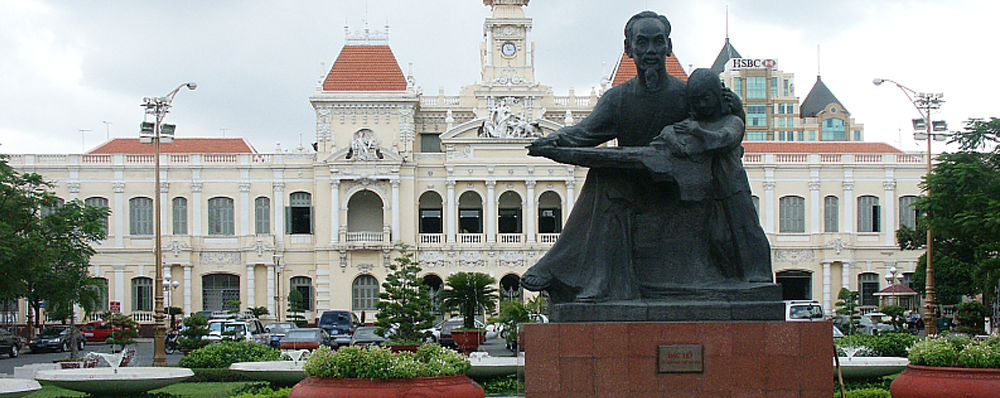Craft village tourism to tap potential
In Vietnam there are about 3,000 craft villages, of which 400 are traditional villages. However, craft village tourism is not really well developed. The Vietnam Business Forum reports.
To date, Vietnam’s craft village tourism has attracted a considerable number of visitors but that’s only spontaneous effort which is not formed in a professional way.
Vietnam has about 3,000 craft villages, of which 400 are traditional villages that counts 53 occupational groups making about 200 kinds of different crafts. Many of the villages have the history of hundreds of years, and that really is "tourism resource mine". The potential is huge but the number of visitors coming to the villages is still limited despite the fact that several enterprises have opened quite a lot of village programmes and tours.
Luu Duy Dan, Chairman of the Vietnam’s Craft Village Association, said that many localities have guidelines to attach craft villages to the development of tourism. Craft villages also have tourism development orientation, even appearing in the products of travel agents, but there have been no positive changes.
He said that the villages are yet to have suitable conditions to perform their craft skills; services for visitors are still poor; community participation in tourism development is not high; and people are not aware of the values tourism brings. Some villages have tourism development orientation, but transport infrastructure is not favourable, and the environment is not clean and activities are not well-organised.
A village is considered to have developing tourism when its income from tourism accounts for at least 25 percent of its total income. Pham Trung Luong from the Institute for Tourism Development Research commented that the villages achieving that goal have not yet appeared.
He pointed out a common drawback of Vietnam's craft villages is that despite they are large in number and rich in forms of production, they are yet able to make typical tourism products of Vietnam. If there is one, the product is monotonous and not suitable for the needs of the market. Most Vietnamese village artisans produce according to their own interest or in stereotypes without creativity and learning about the tastes of tourists. For example, in Hanoi, craft villages such as Bat Trang pottery, Dong Ky wood, Van Ha wood, Ha Thai lacquer and Quat Dong embroidery can be said to be "flourishing" thanks to exporting handicrafts, but the service for tourists fails to enjoy due attention.
Therefore, Luong said that to develop craft village tourism well, it is essential to have a shift in the perception of the villagers. Instead of focusing on the luxury consumer market for exports, the villages need to focus on popular souvenir market segment. This market segment is very exciting and brings great revenues.
Orientations for promoting tourism villages is what branch and local managers, particularly the Vietnam’s Craft Village Association has been working on and looking for years. However, a recent workshop on this issue did not achieve any significant progress. There have been no breakthrough or creative solutions contributing to the craft village tourism. It must have been a reason for that.
According to Prof. Phan Hong Ly, Director of the Institute of Cultural Studies, to date, conferences discussing the development of village tourism have been purely based on the subjective judgment of the State agencies or professional studies. This sometimes makes loss of accuracy from reality. The authorities should instead organise a number of surveys on opinions of foreign visitors about tourism activities of the villages so that they can know the true demands and complaints of tourists.
Ly further said an important factor to attract tourists to the village is environmental issue. Planning should make clear the responsibility of the authorities, especially of the central level, for creating and maintaining social and natural environment suitable to attract tourists. To develop and promote craft village tourism is difficult, to preserve identity and elite of the villages as well as people's living environment is even more difficult, Ly stressed. If the village only focus on making profit from tourism and economic activities and forgets those basic principles, they will lose their largest part of the cultural heritage.
Craft village tourism development, if based solely on travel agents to bring tourists, is unsustainable. Creative tourism trend is currently very attractive in village tourism. Currently, tourists coming to villages not only see but also show their desires to learn skills and create products by themselves. To meet this demand, the villages must have travel agents build products, keep houses with traditional and old architecture and skilled artisans, collect well-known products, open gallery exhibiting historical stuff on village development, and open exhibition so guests can choose craft products of their own interests. The strength to the above mentioned things lie nowhere else but in the villages and their people.







